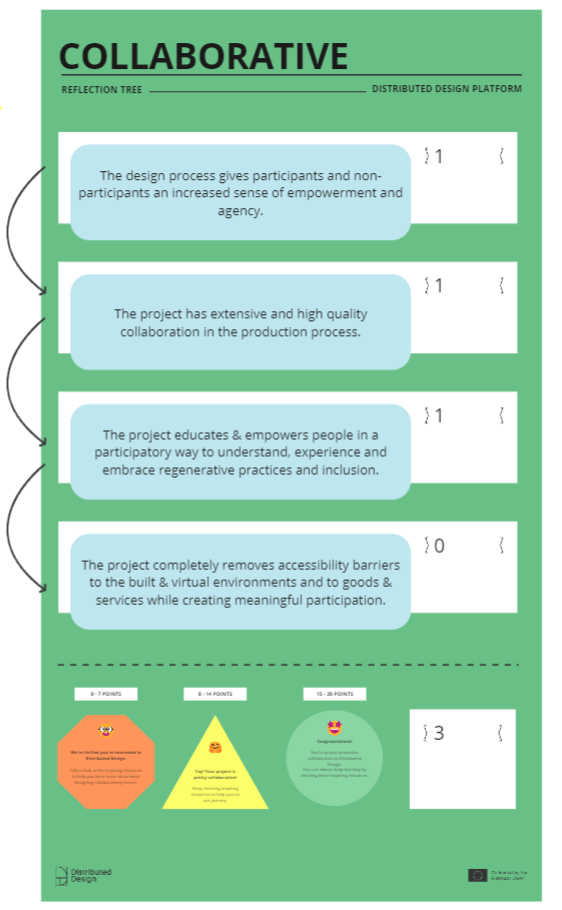Design with Values¶
Faculty and Facilitators
Jessica Guy and Olga Trevisan
Reflection Tree¶
From the Reflection Tree class activity in MIRO
Reflection¶
What are the key takeaways from the activity?¶
- Retrospecting and Planning. I chose a previous intervention from the first term for the class activity, it was easy to evaluate because of its completion. In contrast, evaluating a future project, with a less concrete plan, is quite challenging since it could go in any way. It urges/forces one to put values at the front of mind. I think this is super important. I shall do another one for my thesis project.
- I am curious on how could distributive design approach affect at the level of policy and governance (”The project has an impact on culture and governance with respect to environmental regeneration (i.e. new norms, attitudes or beliefs like extractivist practices to positive feedback loops)”).
Could you provide an open reflection on the tool Reflection-Tree?¶
- The reflection tree is an valuable tool to assess projects and interventions. It’s quantitative. It’s subjective. For ‘Value Regeneration’, it is dependent on one’s understanding of “value”.
- The (my) lack of knowledge in the material environmental impact of digital products, especially those that use AI - which we know uses a lot of computational resources to train and use, leads to an inaccurate evaluation for the environmentally regenerative criteria.
- The tool allows us to design with the complexities of the real world.






